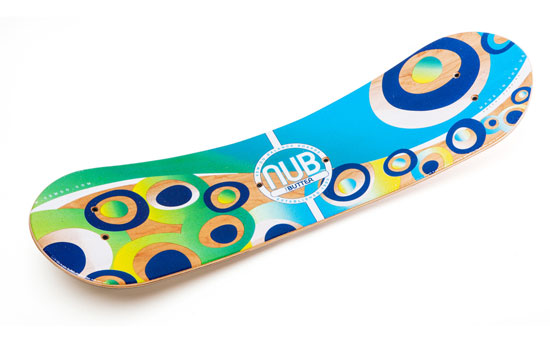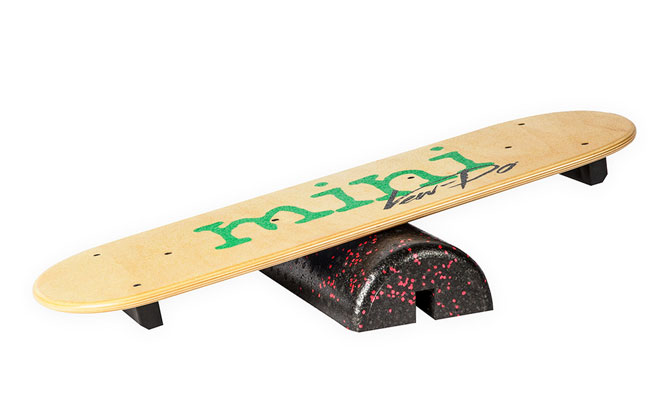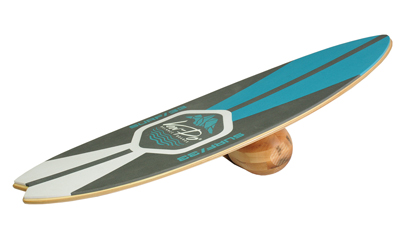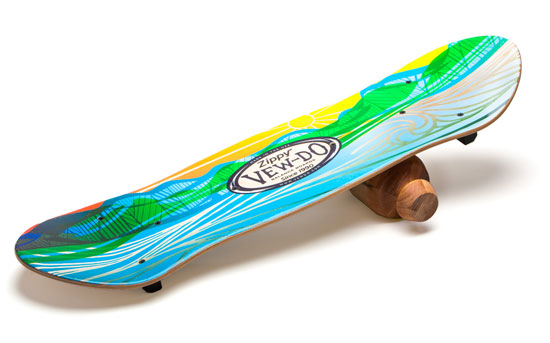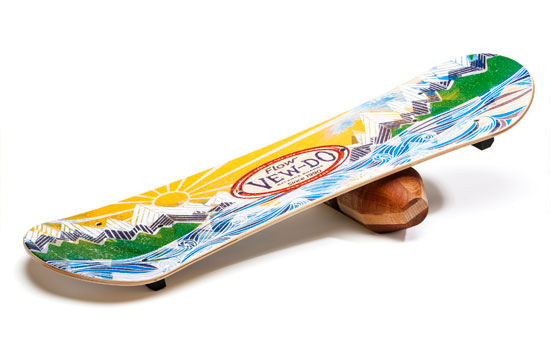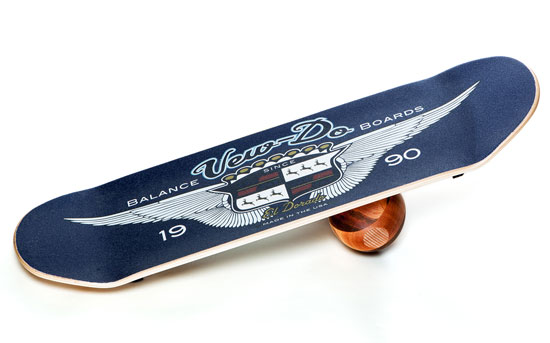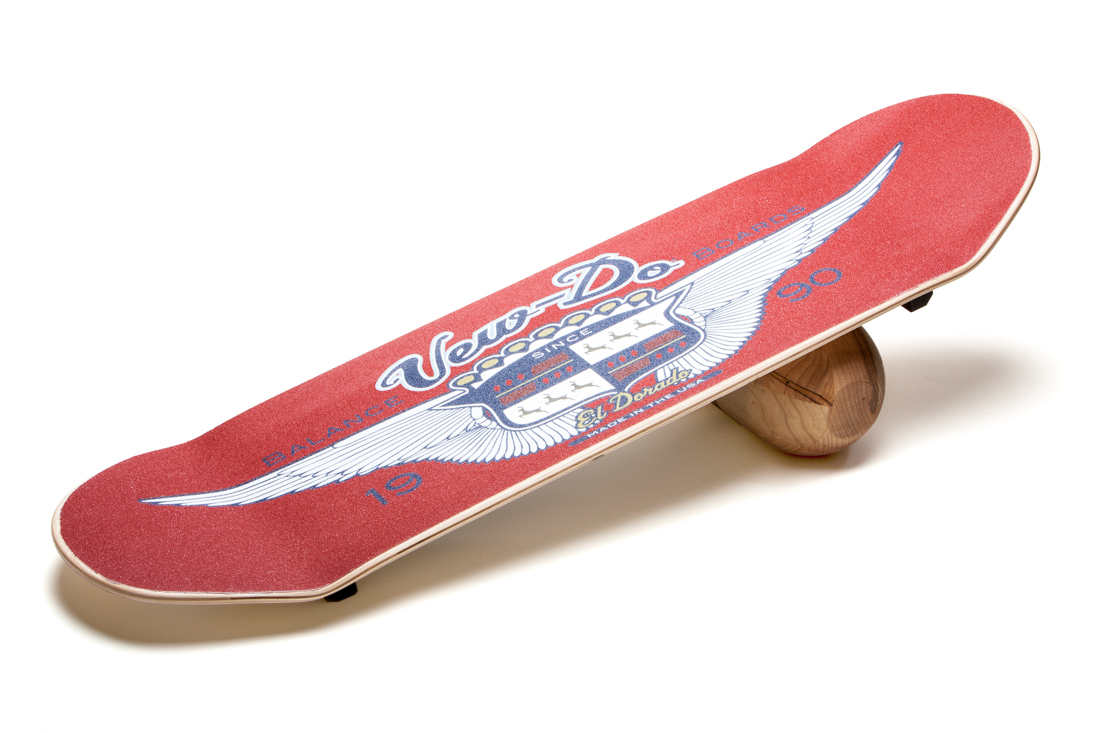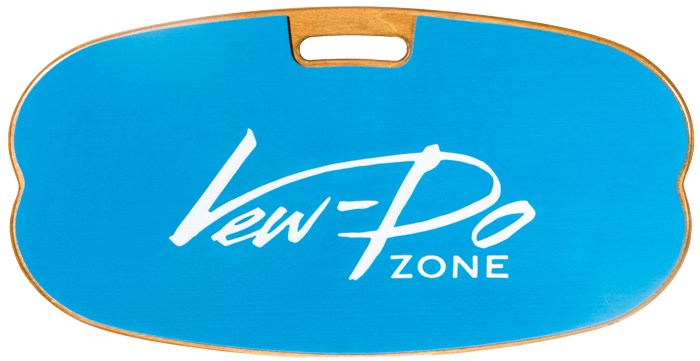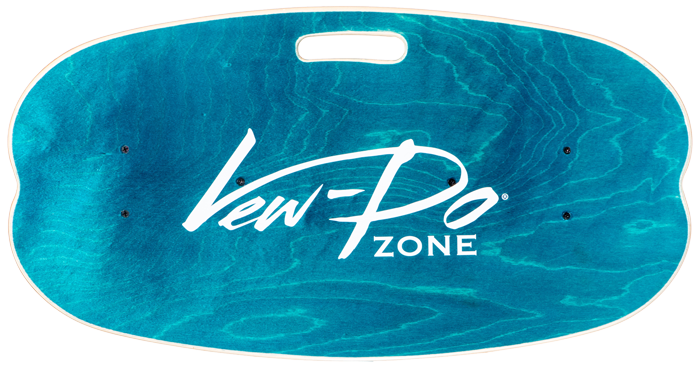Human Balance System Pt. 1 - Components of the Human Balance System
The Human Balance System consists of three parts. The Visual (depth, velocity and motion perception), the Vestibular System (inner ear), and the Somatic Sensory or Somatosensory System (proprioception and exteroception).
Vestibular System (inner ear) - The most important part of human balance is the inner ear which contains three canals. In simple terms, the three canals contain a gel-like liquid called endolymph and tiny hair cells. When both inner ears are working properly they give the brain information through the central nervous system about linear and angular positions of the body with respect to gravity.
Visual (depth, velocity and motion perception) - Visual input from the eyes send the brain information about the position of the body relative to other objects, their depth, velocity and motion. The eyes and the ears compliment each other not only to maintain balance, but also to maintain clear vision during movement. The inner ear sends impulses that continuously adjust your eyes in coordination to even the smallest movement of the body such as your heartbeat or breathing.
Somatic Sensory or Somatosensory System (proprioception and exteroception) - The Somatosensory System provides the brain two valuable pieces of internal and external spatial information to maintain balance. One comes from internal sensors within the body called propriceptors. Proprioceptors give the central nervous system information about the movement of body parts in relation to other parts of the body. This is called the sense of proprioception. Without the sense of proprioception, you would not be able to put food in your mouth without visually watching your hand moving to your mouth. A common test for loss of proprioception is walking the line during a sobriety test by police officers.
The other Somatosensory information the brain uses comes from external body sensors called exteroceptors. Exteroceptors are pressure sensors located in your feet and hands that provide external spatial information about the topography of the ground or support surface. Exteroception also helps in your overall balance system by relaying information about ground movement. An example would be the difference between standing on solid ground and sinking into mud.
By: Rick Contrata
Human Balance System Pt. 2 - How the Human Balance System Works
The human balance system has three distinct systems that work together. As noted in detail in Pt. 1 of this series, they include the Vestibular, the Visual and the Somatic Sensory Systems. Together, they give you the ability to maintain or recover balance over your base of support (BOS). The ankles are the most widely cited position of BOS and in many situations it is. But this is still a narrow interpretation. That's because in many physical activities and sports such as gymnastics and combat sports, BOS can be anywhere from the hands, to the knees, to the head and more.
Our three part balance system is generally ignored on a day to day basis and the least focused part of physical training because it works sub-consciously like the lungs or the heart. You rarely think about it, even in a balance recovery situation unless one of the systems is temporarily or permanently lost. When this occurs you rely on the recruitment of the remaining two systems to maintain or recover balance.
Have you ever been in a pitch black room and suddenly felt unbalanced? That's because the loss of visual perception means you now must recruit the Vestibular and Somatosensory Systems to pick up the slack. Another example is during intoxication from drugs, alcohol or from an injury where the loss of proprioception requires recruitment of the Visual and Vestibular systems.
Without at least two of the three balance systems, you cannot maintain balance. This brings us to balance training and the use of balance training devices. Despite the ignorance of the anti-balance training community, study after study, both medical and physiological, have proven that balance recovery training works. Especially in cases where one of the three balance systems is lost or damaged, this can be achieved through the use of balance training devices. This not only applies to increasing athletic performance, but also, rehabilitation, physical therapy and injury prevention.
The performance gains from balance training are the same as any other sport or physical activity skills. From golf to football to extreme sports and others, to be maintained, you must continue to train and work towards even higher skill levels.
By: Rick Contrata
Balance Training the Frontal Sagittal & Transverse Planes of Motion
As we continue talking about balance, we wanted to quickly touch on balance boards, balance training and the three planes of motion. As we've repeated many times before, balance and movement is a whole body event; not one joint or limb at a time. In the same vein, when we think about the three planes of motion and the role of balance boards, we don't want to categorize them as separate events. Most activities require simultaneous use of all three planes of motion.
There are three planes that divide the body into separate and distinct ranges of motion.
Frontal Plane - Also known as the coronal plane, divides the body from front to back. Frontal plane motion would include leaning from left to right.
Sagittal Plane - Divides the body from left to right. Sagittal plane motion would include bending forward and leaning back.
Transverse Plane - Divides the body from top to bottom. Transverse plane motion would include rotating the head or torso.
Vew-Do Balance Boards, because of their tapered rock design, give you the ability to balance, strength and fitness train dynamically, in all three planes of motion.
By:Rick Contrata
Balance Board Bootcamp | Vew-Do Balance Board Quick Start Guide
Balance Board Boot Camp is your quick start guide to help you go from balance board rookie to balance boarder and better balance skills in 10 minutes. After unpacking your board, please take the time to read the instruction manual and familiarize yourself with its components and proper usage.
To get started, use the illustrated guide below to safely get started using a Vew-Do Balance Board for baalance training.

By: Rick Contrata
Balance Training Pt. 1 - What is Balance Training?
Balance training is training for the ability to recover balance or base of support (BOS) from postural sway (body movement over your BOS) following a destabilizing stimulus caused by objects, self-motion or the environment.
This means that because the human body is naturally equipped to be in balance, the whole concept and goal of balance training and the training protocol lies in the state of going from unbalanced back to balanced, otherwise known as balance recovery.
There are three types of balance training. Yeah, I know… you thought there were only two. Keep reading and you'll find out there are three. The first is "Dynamic Balance." The dynamic (in motion) ability to recover from an out of balance situation created by an unstabling environment. This is commonly known as "Dynamic Balance Recovery"
The second is "Static Balance." The static (stationary) ability to recover from an out of balance situation created by an unstabling environment. This is "Static Balance Recovery."
The third is "Dynamic/Static Counterbalance" the ability to oppose and counter an equal or greater weight or force and maintain or recover balance. This is also referred to as "Perturbation Training." Examples would be a football player preventing a blocker from moving him or a hockey player avoiding a check.
Balance training, to be most effective must be performed using the same type of full body motion and equipment in a destabilizing environment as the intended activity itself. The balance training involved to re-stabilize your body while doing a backside 720 on a snowboard isn't the same as what's needed by a linebacker making an open field tackle or a golfer swinging his club.
Just like any training protocol, once mastered, additional stimulus must be added to continue progression.
By: Rick Contrata
Balance Training PT. 2 - 23 Benefits of Balance Training
Here's a short list of benefits associated with balance training. Which ones will you train for?
- Multi Sport-specific applications
- Has aerobic and anaerobic capabilities
- Has fat-burning and cardio capabilities
- Improves agility
- Improves muscle memory
- Increases confidence levels in competition
- Balance training enhances full body movement
- Improves joint stability
- Improves muscle and joint strength/flexibility
- Improves muscular endurance
- Exercising and training can improve your appearance
- Exercising can lower cholesterol and reduce the risk of heart attack
- Exercising can lower blood pressure
- Helps prevent injury from falls
- Increases performance for all physical activities
- Easily incorporated into any training protocol
- Increases muscle strength and mass
- Economical and time saving
- It's fun and relaxing
- Stimulates brain activity
- Can be used by almost age group
- Limitless applications and uses
- Portable and space saving
By: Rick Contrata
Balance Training Pt. 3 - Who Uses Balance Training?
Balance training is centuries old, dating back to the use of martial arts like Tai Chi. In modern times, the use of balance training devices like the original Stanley Washburn Bongo Board as a balance training tool for skiers dates back to the fifties.
Although still a niche in the training equipment market, balance training devices are used at gyms, training centers, physical therapy centers, hospitals, at home, rehab centers, in the military and more.
Users are comprised of almost every age, gender and physical capability including trainers, coaches, professional and amateur athletes, persons with learning and physical disabilities, the entertainment industry, action/extreme sports enthusiasts, recreational users and others.
By: Rick Contrata
Balance Training Pt. 4 - Balance Recovery Strategies
Because Vew-Do Balance Boards have the unique ability to destabilize the rider in all three planes of motion and they do it at such a high level of performance, they are the most logical choice for and type of balance training.
When the three human balance systems are working properly, they detect perturbations and other unbalanced threats by sending signals to the brain for use in corrective action to restore balance. From a static upright position like a soldier standing at attention, there are three main balance strategies we employ to regain equilibrium. They are the ankle strategy, the hip strategy and the step strategy. Let's take a look at each one…
Ankle Strategy - Think of the human body as an inverted pyramid with the ankles as the focal point of support. During a mild balance threat, internal and external somatosensory input recruits the ankles to correct and maintain balance. The ankle strategy is a somewhat sub-conscious and an ongoing static response for maintaining and recovering balance.
Hip Strategy - When greater forces act on the body and increase the intensity of a balance threat, the body will step up its defenses to remain or recover balance using the hip strategy. The ankle strategy still plays a role, but now, the body adds segmentation of the upper and lower limbs, contraction of the upper body muscles and movement in the hips to recover balance. The hip strategy accompanies an increase in speed of movement to regain equilibrium.
Step Strategy - When violent disruption of balance over-powers the ankle and hip strategies, the step strategy is called upon as a last resort. In the step strategy, the balance system sends signals to indicate the need to re-position our base of support. We do this by stepping forward, backward or laterally until an acceptable base of support is achieved. Many times the ankle and hip strategies are also recruited to gain total stability.
By: Rick Contrata
Balance Board Training & Fitness Exercises for Men & Women Over 40
"Balance, coordination and agility equals grace.." - Radu Teodorescu – Radu's Physical Culture
Do balance board training, strength & fitness exercises work for men and women over 40?
The last of the baby boomers hit 40 in 2000. This generation is nothing like the generation before it when it comes to physical activity, health and nutrition. They're staying more active, more fit and they're doing it with strength, balance and cardio exercises, eating healthier and actively participating in sports and recreational activities.
I'm going to tell how and why balance board training and fitness exercises work for men and women over 40, as well as give you some basic balance board training and fitness exercises to get you started. But first…
We need to touch on the aging process. The human body is an amazing piece of machinery. With the slightest movement and even when sedentary, cells are continuously dying and reproducing themselves. As we age, our body's ability to repair and rebuild not only slows, it just doesn't do as good a job as it did before.
Unfortunately, there are parts of the aging process that you have no control over like genetics. But there are some things that you can control, like your environment and your lifestyle. A few of the most common lifestyle variables are diet, exercise and stress management.
What GOD gave you, Mother Nature slowly takes away. Sorry kiddo, but left unchecked, here's a short list of what Mother Nature does to us over time.
- Muscle mass decreases and body fat percentage increases
- Strength, energy and reflexes decrease
- Eyesight and hearing capacity decreases
- Aerobic capacity decreases
Basically, your body loses its ability to turn oxygen into energy which slows activity and metabolism, increases body fat and cannibalizes muscle tissue. Here's what you can do to stem the tide and in some instances, like strength training, even reverse it.
- Get regular exercise, even if it's just walking
- At a minimum, exercises to strengthen the muscles you use for walking and lifting
- Eat a healthy anti-oxidant rich diet
- Minimize stress with lifestyle or activity changes if necessary
Since revolutionizing the balance training market in 1990 with the introduction of the World's first patented multi-axis dynamic balance boards, the magic of balance training to heighten balance recovery skills continues to grow and pave new roads.
Not only has the balance board grown from a sport-specific balance training tool, today's Vew-Do balance boards are so versatile, they also provide capabilities for strength training, plyometrics, aerobic and anaerobic fitness training, body weight exercises, rehab, physical therapy as well as just plain fun and recreation.
They are used at gyms, training centers, physical therapy centers, hospitals, the home, rehab centers, in the military and more.
Users are comprised of almost every age, gender and physical capability including trainers, coaches, professional and amateur athletes, persons with learning and physical disabilities, the entertainment industry, action/extreme sports enthusiasts, recreational users and others.
How balance board training helps men and women over 40
The human balance system is design to transmit feedback for out of balance situations (balance recovery feedback). As we age, decreased muscle mass, strength, agility and aerobic capacity all contribute to naturally decreasing balance recovery skills. To regain some of the lost capacity to recover balance through the aging process, incorporate a balance board training routine with an overall strength and fitness program. Here's how a Vew-Do balance board will help.
When the rider activates the Vew-Do Balance Board with movement, the board continuously disrupts your center of balance forcing the use of dynamic and multi-directional planes of motion. This puts you in "balance recovery" mode and forces you to use and develop all three of your body's balance systems in all three planes of motion (frontal, sagittal and transverse planes).
As you achieve a higher skill progression, you're body will store this information as muscle memory and use the stored information in a balance recovery situation when it is recreated in another environment. In reality, it's really an "unbalance" board for training balance recovery skills. That's because the skill enhancement for balance recovery is gained by disrupting your balance or base of support (BOS), and not by trying to maintain static states of balance. Balance training is training to go from an unbalanced state back to a balanced state.
In addition to improving balance recovery skills, proprioception and other benefits, balance boards also add physical conditioning, strengthening of muscles, tendons and ligaments, calorie burning and enjoyment to your training routine.
Below, you'll find a short list of balance board exercises for men and women over 40.
Some of the exercises you can download in this PDF file
Balance Board Strength, Balance and Fitness Exercises
Basic Balance Training - The key to balance training is to keep your center of balance (belly button) over the rock at all times. Mount the board and center the rock underneath it. Keep both knees slightly bent, your back straight and your head up to start. Set the board in motion by straightening one leg and increasing the bend of the knee on the other leg, thus shifting your weight over the board. As you reach the "stop ends" of the board, repeat the process with the other leg.
Once you get the hang of this it will become sub-conscious. Then increase the progression by drawing imaginary shapes, writing your name, tossing a tennis ball from hand to hand, having a partner play catch with you etc. The more you progress, the less conscious you will be of your balance recovery strategy.
Static Sea-Saw Squats - This exercise is safe when using a teeter rock. Position yourself on the board in a downhill skier's racing tuck. In other words, squat down until your knee joint creates a 45 degree angle. You'll have one side of the board against the floor and the other side off the ground spanning the teeter rock.
Stay in your static squat, keep the rock centered and shift your weight slightly to the elevated side of the board, then begin pushing into the board with downward pressure while maintaining a tuck position. Repeat this motion with the opposite leg. This creates the sea-saw motion while maintaining a static squat or tuck position. Increase the velocity of the sea-saw motion and you'll start to feel the burn in your thighs.
Balance Board Negative Push-ups - In strength training the term negative means applying more resistance to the gravity friendly portion of the lift. In our negative balance board push-up exercise, you'll add more weight to the lowering portion of the push-up by shifting most of the resistance to one arm.
The way to do this is to assume a push-up position on the board, hands flat on the board, slightly outside of shoulder width, with the rock centered underneath. Perform a push-up, and then roll the rock to one arm underneath the board by pushing the board towards the opposite arm. Then transfer all your weight to the arm positioned over the rock (negative). Lower yourself to the board.
While you are still lowered over the board, slide the board so the rock is repositioned in the center of the board. Push up with your weight evenly distributed over both arms, and then repeat the reloading sequence by moving to the opposite arm. You can enhance this exercise by performing a full cycle one arm push-up (up and down using one arm).
Now that you've got the skinny on balance training for adults over 40, why not add balance board strength, balance and fitness training to you new lifestyle with a Vew-Do Balance Board?
Click Here to Download a PDF of Additional Balance Board Exercises
By: Rick Contrata
Geriatric Balance Board Training For Men and Women Over 60
Today's 60 year old men and women are generally healthier and more active than the same age group just a generation ago.
However, they are not getting there living a sedentary lifestyle. Nature slowly robs us of muscle and bone mass over time. Unfortunately, the loss of balance is also associated with aging. Loss of balance due to aging isn't just due to a natural neurological decline, but age related loss of muscle and bone mass also contributes to the instability of tendons, ligaments and joints.
Active 60 year olds in good health and fitness don't just arrive. They need to be proactive when it comes to exercise and nutrition to maintain that healthy lifestyle.
Many so-called experts on balance fail to realize that variations of ground under foot are not being trained while performing standard static balance training exercises under optimal conditions like hard, flat surfaces, even if these exercises are performed under load.
Let's take a look at some common ground surface variations that can disrupt balance.
- Snow and ice
- Sand and gravel
- Soft or muddy soil
- Floor coverings
- Lawns & other wet surfaces
Static balance exercises are fine for rehab, but they are boring and fail in the areas of balance recovery and proprioception. Many seniors are skiing, snowboarding, playing tennis, golf and even team sports. To maintain this active physical and sporting lifestyle, dynamic balance training is needed.
This is where a Vew-do Balance Board comes in. First, unlike fitness equipment (weight machines, treadmills and stair climbers), using a Vew-Do Board is recreational and fun. And because the board not only disrupts balance, but also stimulates balance recovery strategies, the simple action of using the board forces recruitment and strengthening of the musculature surrounding joints, ligaments and tendons.
People don't look at conventional exercise equipment and think of them as fun and recreational. One of the reasons Vew-Do Balance Board riders use them is because they are simply fun to ride.
By: Rick Contrata







